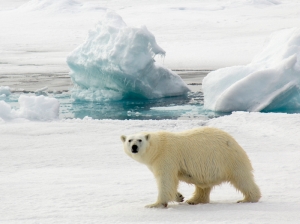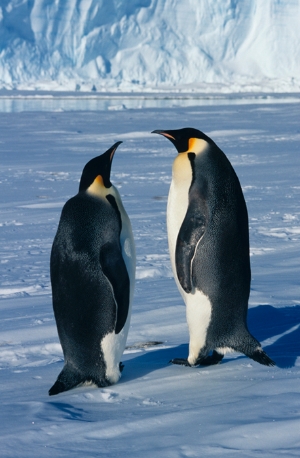Did you know that there are many similarities between the Arctic and Antarctica?
..and that there are many differences between the two polar regions at either end of the Earth. Here are a few of them.
 Polar bears occur exclusively in the Arctic.. Photo: Ann Kristin Balto / Norwegian Polar Institute
Polar bears occur exclusively in the Arctic.. Photo: Ann Kristin Balto / Norwegian Polar Institute
 ..whereas emperor penguins thrive at the southern end of the globe. Photo: Harvey Goodwin / Norwegian Polar Institute
..whereas emperor penguins thrive at the southern end of the globe. Photo: Harvey Goodwin / Norwegian Polar Institute
- The Arctic and Antarctica have glaciers, icebergs and snowstorms – though both are among the regions on Earth where precipitation is lowest.
- Antarctica and the South Pole are land areas covered by ice, whereas the ice around the North Pole in the Arctic is pack ice and ice floes that float on the ocean, surrounded by land masses.
- It is colder and windier in Antarctica than in the Arctic. The lowest temperature ever measured, -89.2°C, was registered Vostok in Antarctica on 21 July 1983.
- When it is summer in the Arctic, it is winter in Antarctica – and vice versa.
- Trees grow in the Arctic, but Antarctica has only lichens, mosses and a handful of plants.
- The Arctic has indigenous peoples and permanent residents. Antarctica has no permanent residents, only researchers and others who visit the continent.
- All dry land in the Arctic belongs to some nation, whereas Antarctica is international territory.
- The Arctic has tundra where the vegetation is rich in spring and summer.
- Antarctica has no mammals that live on land. In the Arctic, several land-based mammals can be found, including reindeer, arctic fox and muskox.
- Both the Arctic and Antarctica have seals, birds, whales, fish, and krill.
- There are research stations both in the Arctic and in Antarctica.
- The Arctic was described long before Antarctica. It is said that the first long-distance traveller who crossed the Arctic Circle and wrote about the journey was the Greek Phytheas, in about 325 B.C. He called the land area Thule: a place where the midsummer sun stayed in the sky all night. The first person to tell tales of land in Antarctica was Antonio de la Roche, in 1675, who was in contact with land in South Georgia. But the true exploration of Antarctica began with the Englishman James Cook, who crossed the Antarctic Circle 17 January 1773.